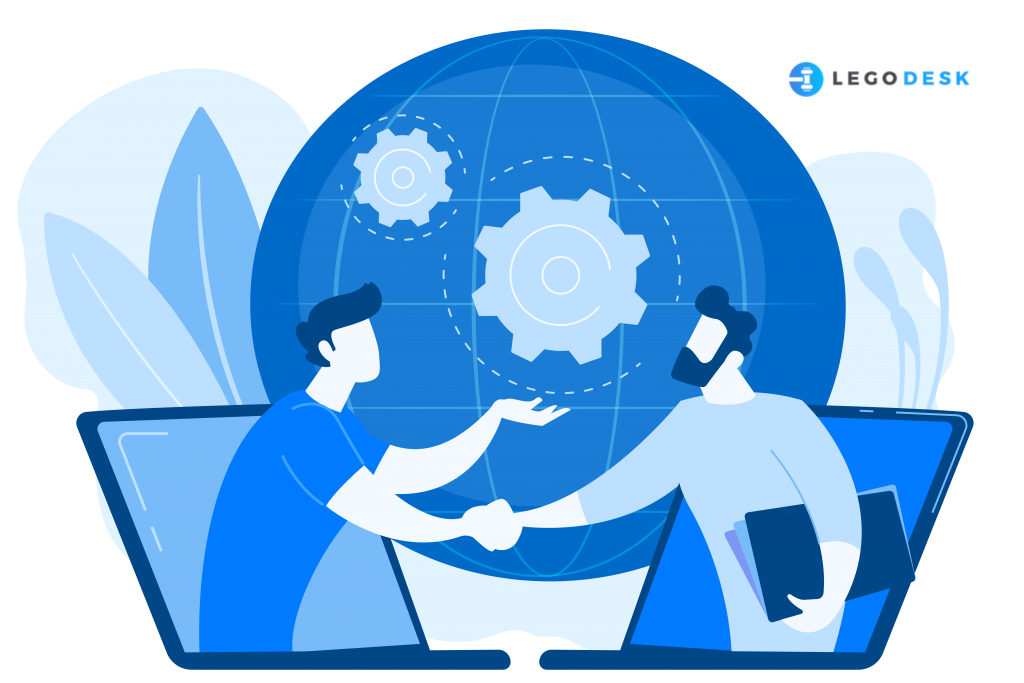Role of Technology in Dispute Resolution

Our civilization has been altered to the point where we can’t picture modern living without Technology. Technology has an impact on how we engage with one another, especially in terms of dispute resolution: it either creates new types of issues as a result of the additional capabilities it provides, or it might assist in dispute settlement. In this blog, we’ll look at the role of technology in dispute resolution and how it can be used to improve speed and efficiency.
Read Also – How to Grow a Law Firm with Legodesk?
Latest Disputation Resolution Trends
If dispute resolution systems do not embrace technology, there is a risk of growing estrangement with the people they are supposed to aid. A movement from traditional, court-based dispute resolution to alternative dispute resolution (ADR) systems has been seen. Because sustaining business relationships is vital, ADR is no longer an option for the business community, but rather the norm. The judicial system, on the other hand, is constrained by an expanding workload, which results in postponed decisions and a never-ending appeals process.
Aside from ADR, there is a movement toward online dispute resolution (ODR), which has been enabled by machine learning, and artificial intelligence (AI), which is becoming less artificial and more intelligent. Because of the rapid pace of technological progress, more people are integrating the internet into their daily lives, and as a result, individuals are turning to ODR when they file a complaint or dispute on e-commerce or e-payment platforms, whether deliberately or unknowingly. Every year, these ODR platforms manage hundreds of millions of disputes. The number of ODR tools available continues to grow. They can now manage more sophisticated conflicts, rather than merely low-value e-commerce issues like they used to. ODR has the distinct benefit of not being bound by any particular jurisdiction, and it can be a very successful cross-border dispute resolution tool.
Read Also – How safe is the cloud for law firms?
The smart contract, which directly integrates contractual clauses within the software, is another type of dispute resolution that is gaining traction. When certain predetermined circumstances occur, the software executes itself. In this approach, smart contracts ensure that conflicts are resolved quickly and fairly.
Another instance is when technology is used to assist in the resolution of disputes. The parties to disputes in international financial centers are frequently from different nations. We have been able to transcend distance and close the gap thanks to technological advancements. Parties and witnesses to a dispute can take part in the settlement process from any location on the planet. The COVID-19 pandemic and consequent lockdowns acted as a catalyst, allowing technology’s actual potential in conflict resolution to be realized. To connect geographically dispersed parties and parties under lockdown, courts have held sittings through video links.
Case Management
In case of management, technology can also play a significant role. Courts have adopted alternative dispute resolution (ADR) methods, and we’ve witnessed a rise in court-ordered mediation. The importance of such a mechanism for the prompt delivery of justice has prompted several jurisdictions to establish mediation divisions within their court systems, which are headed by dedicated judges whose main role is to act as a mediator and assist parties in reaching an amicable resolution of their disputes, or at the very least significantly narrowing issues.
The presenting of evidence is another area where technology plays an important part to make a substantial impact. Online databases and legal tech applications have already become crucial tools for lawyers. Legaltech is an excellent example of how machine learning and the theory of stare decisis can be combined to resolve disputes.
It’s Time to Make a Shift
In light of COVID-19, which has called for a radical rethinking of every part of our lives, now is an excellent time to reconsider dispute resolution and unlock the full potential of technological solutions. During the lockdown, for example, courts and tribunals were unable to convene physical sessions to evaluate cases. The essential lesson we learned is that hearing parties and counsel through video conference is a viable option that will not jeopardize the quality of justice delivered. On the contrary, it will save time for all parties, particularly those who are unable to travel due to constraints.
Read Also – Role of Judiciary in promoting ADR in India
Lawyers, in particular, have a reputation for being conservative and averse to positive shifts. However, there is a need for a reassessment of how our courts work and how technology may help in meaningful ways. Computers or robots will not be able to deliver judgments in the courts, but technology can assist the judge in making a conclusion, just as it does in all other aspects of life. Technology-assisted dispute resolution has become the new standard.
Legodesk organized a webinar on 17 March 2022 on the same topic. Our expert speaker Dr. Pallab Das, shared many helpful tips and insights regarding technology and dispute resolution. Simply click the link on the left side pop-up to view the webinar recording.